CKA Certification Course - Certified Kubernetes Administrator
Security
Service Accounts
Welcome to this comprehensive guide on Kubernetes service accounts. In this lesson, we focus on how service accounts function—primarily from an application developer's perspective. While advanced security topics such as authentication, authorization, and role-based access control (RBAC) are covered extensively in the Kubernetes Administrators Course, this guide is dedicated solely to working with service accounts.
There are two main types of accounts in Kubernetes:
- User Accounts: Designed for human users like administrators or developers.
- Service Accounts: Intended for machine-to-machine interactions or application-specific tasks. For instance, monitoring tools like Prometheus use a service account to query the Kubernetes API for performance metrics, while Jenkins uses one for deploying applications.
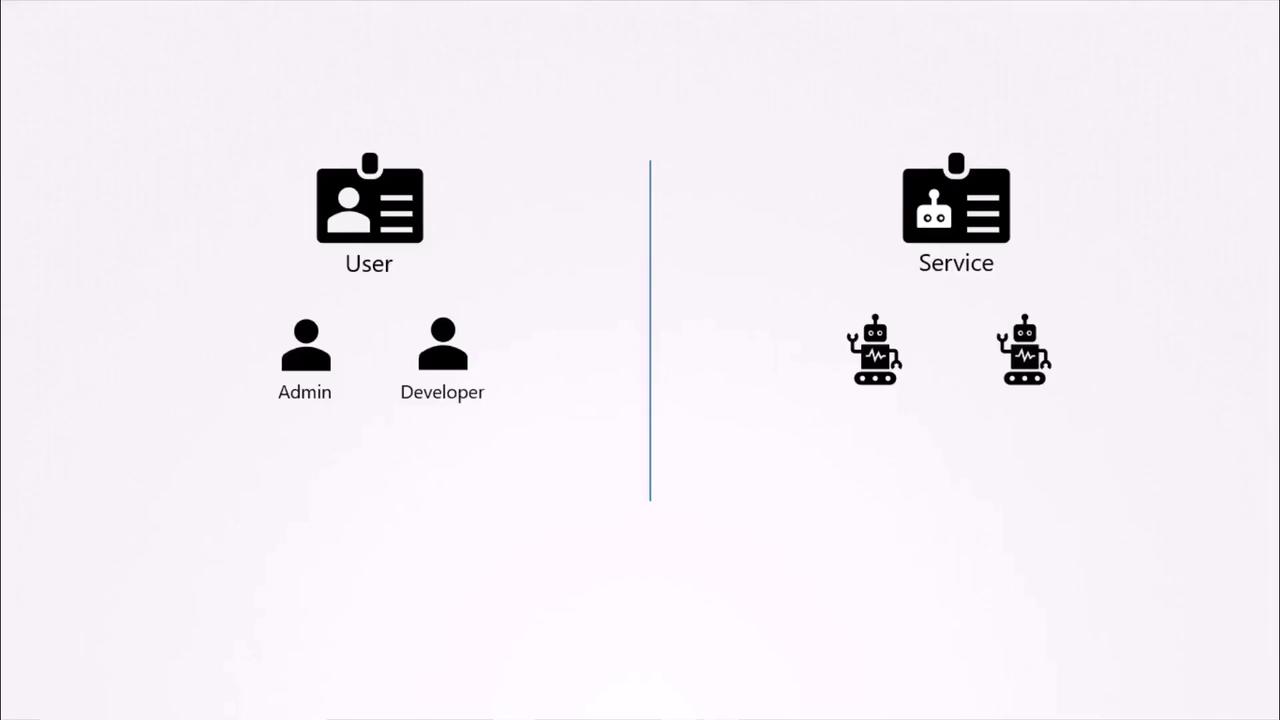
Example: A Kubernetes Dashboard Application
Consider an example: "my Kubernetes dashboard," a basic dashboard application built with Python. This application retrieves a list of Pods from a Kubernetes cluster by sending API requests and subsequently displays the results on a web page. To authenticate its API requests, the application uses a dedicated service account.
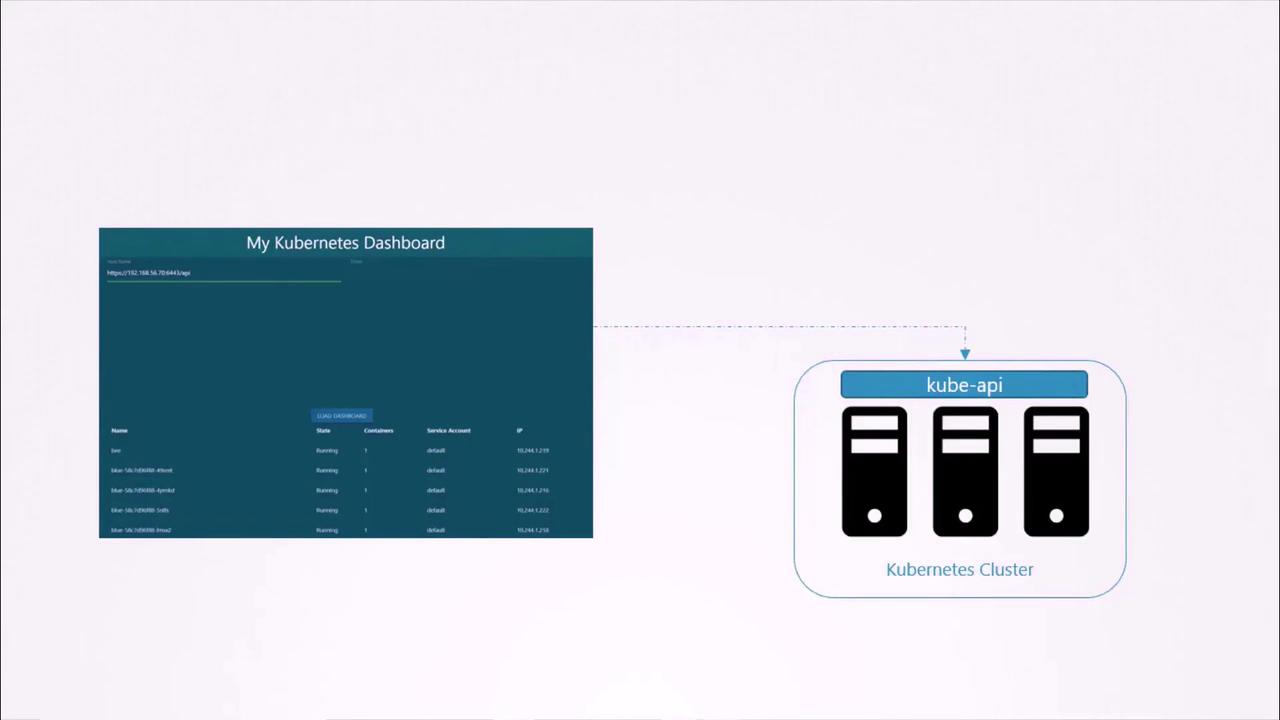
Creating a Service Account
To create a service account named dashboard-sa, run:
kubectl create serviceaccount dashboard-sa
To view all service accounts, use:
kubectl get serviceaccount
The output will appear similar to:
NAME SECRETS AGE
default 1 218d
dashboard-sa 1 4d
Upon creation, Kubernetes automatically generates a service account token stored as a Secret and links it to the account. To inspect the details of your service account and its token, execute:
kubectl describe serviceaccount dashboard-sa
Expected output:
Name: dashboard-sa
Namespace: default
Labels: <none>
Annotations: <none>
Image pull secrets: <none>
Mountable secrets: dashboard-sa-token-kbbdm
Tokens: dashboard-sa-token-kbbdm
Events: <none>
To examine the token itself, view the corresponding Secret:
kubectl describe secret dashboard-sa-token-kbbdm
Sample output:
Name: dashboard-sa-token-kbbdm
Namespace: default
Labels: <none>
Type: kubernetes.io/service-account-token
Data
token: eyJhbGciOiJSUzI1NiIsImtpZCI6Ij... (truncated for privacy)
This token serves as the authentication bearer token for accessing the Kubernetes API. For example, using curl:
curl https://192.168.56.70:6443/api -k \
--header "Authorization: Bearer eyJhbgG…"
Note
In your custom dashboard application, you would typically place the token into the appropriate configuration field to enable API authentication.
Automatic Mounting of Service Account Tokens
When deploying third-party applications (such as a custom dashboard or Prometheus) on a Kubernetes cluster, you can have Kubernetes automatically mount the service account token as a volume into the Pod. This token is typically available at the path: /var/run/secrets/kubernetes.io/serviceaccount.
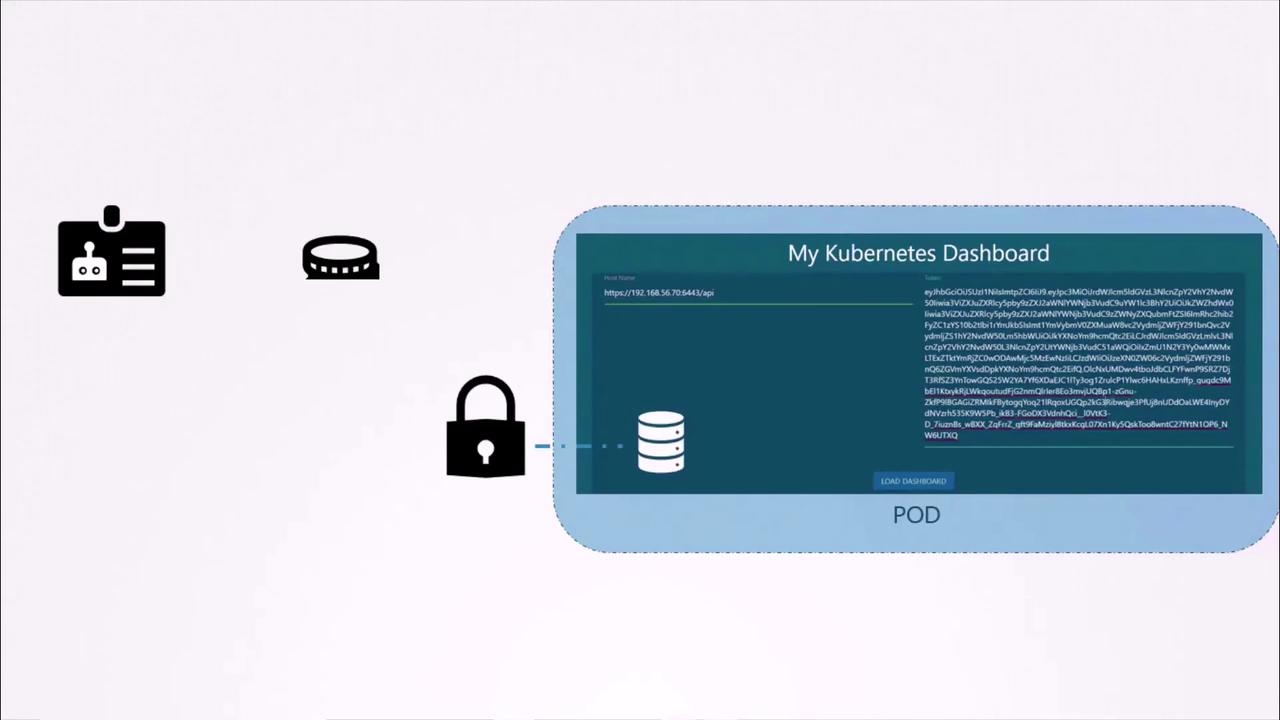
Every namespace includes a default service account that is automatically injected into Pods. For example, consider the following simple Pod manifest using a custom dashboard image:
apiVersion: v1
kind: Pod
metadata:
name: my-kubernetes-dashboard
spec:
containers:
- name: my-kubernetes-dashboard
image: my-kubernetes-dashboard
After creating this Pod, running:
kubectl describe pod my-kubernetes-dashboard
will reveal a volume mounted from a Secret (usually named something like default-token-xxxx). You might see an excerpt similar to:
Name: my-kubernetes-dashboard
Namespace: default
Status: Running
IP: 10.244.0.15
Containers:
nginx:
Image: my-kubernetes-dashboard
Mounts: /var/run/secrets/kubernetes.io/serviceaccount from default-token-j4hkv (ro)
Volumes:
default-token-j4hkv:
Type: Secret (a volume populated by a Secret)
SecretName: default-token-j4hkv
Optional: false
Inside the Pod, listing the contents of the service account directory shows files such as the token file containing the bearer token:
kubectl exec -it my-kubernetes-dashboard -- ls /var/run/secrets/kubernetes.io/serviceaccount
kubectl exec -it my-kubernetes-dashboard -- cat /var/run/secrets/kubernetes.io/serviceaccount/token
Using a Different Service Account
By default, Pods use the default service account. To assign a different service account—like the previously created dashboard-sa—update your Pod definition to include the serviceAccountName field:
apiVersion: v1
kind: Pod
metadata:
name: my-kubernetes-dashboard
spec:
serviceAccountName: dashboard-sa
containers:
- name: my-kubernetes-dashboard
image: my-kubernetes-dashboard
Note
Remember that you cannot modify the service account of an existing Pod. To use a new service account, delete and recreate the Pod. Deployments will automatically roll out new Pods when changes are made to the Pod template.
After deploying the updated manifest, running:
kubectl describe pod my-kubernetes-dashboard
will show that the new service account is now in effect, with volume mounting information reflecting the token for dashboard-sa (e.g., dashboard-sa-token-kbbdm).
If you wish to disable the automatic mounting of the service account token, set automountServiceAccountToken to false in the Pod specification:
apiVersion: v1
kind: Pod
metadata:
name: my-kubernetes-dashboard
spec:
automountServiceAccountToken: false
containers:
- name: my-kubernetes-dashboard
image: my-kubernetes-dashboard
Changes in Kubernetes Versions 1.22 and 1.24
Prior to Kubernetes v1.22, service account tokens were automatically mounted from Secrets without an expiration date. Starting with v1.22, the TokenRequest API (KEP-1205) was introduced to generate tokens that are audience-bound, time-bound, and object-bound—enhancing security significantly.
Below is an example Pod definition using a projected volume sourced from the TokenRequest API:
apiVersion: v1
kind: Pod
metadata:
name: nginx
namespace: default
spec:
containers:
- image: nginx
name: nginx
volumeMounts:
- mountPath: /var/run/secrets/kubernetes.io/serviceaccount
name: kube-api-access-6mtg8
readOnly: true
volumes:
- name: kube-api-access-6mtg8
projected:
defaultMode: 420
sources:
- serviceAccountToken:
expirationSeconds: 3607
path: token
- configMap:
name: kube-root-ca.crt
items:
- key: ca.crt
path: ca.crt
- downwardAPI:
items:
- fieldRef:
apiVersion: v1
fieldPath: metadata.namespace
Starting with Kubernetes v1.24, Kubernetes no longer automatically creates non-expiring service account tokens stored as Secrets. Instead, after creating a new service account, you must generate a token explicitly with:
kubectl create token dashboard-sa
This command produces a token with an expiry (by default, one hour from creation). You can verify and decode this token using tools like jq or jwt.io:
jq -R 'split(".") | select(length > 0) | .[0] | @base64 | fromjson' <<< <TOKEN>
If necessary (though not recommended), you can still create a non-expiring token by manually creating a Secret. Ensure the service account exists first:
apiVersion: v1
kind: Secret
metadata:
name: mysecretname
annotations:
kubernetes.io/service-account.name: dashboard-sa
type: kubernetes.io/service-account-token
Warning
It is highly recommended to use the TokenRequest API to generate tokens, as API-generated tokens provide additional security features such as expiry, audience restrictions, and improved manageability.
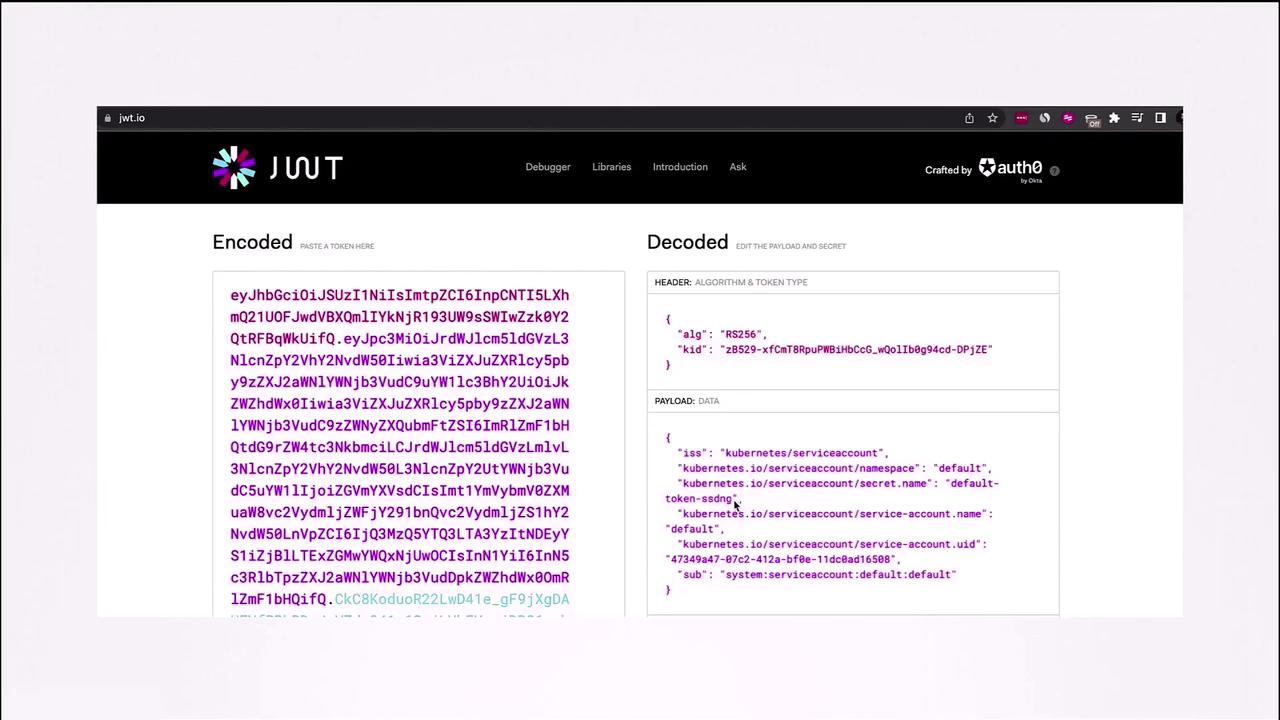
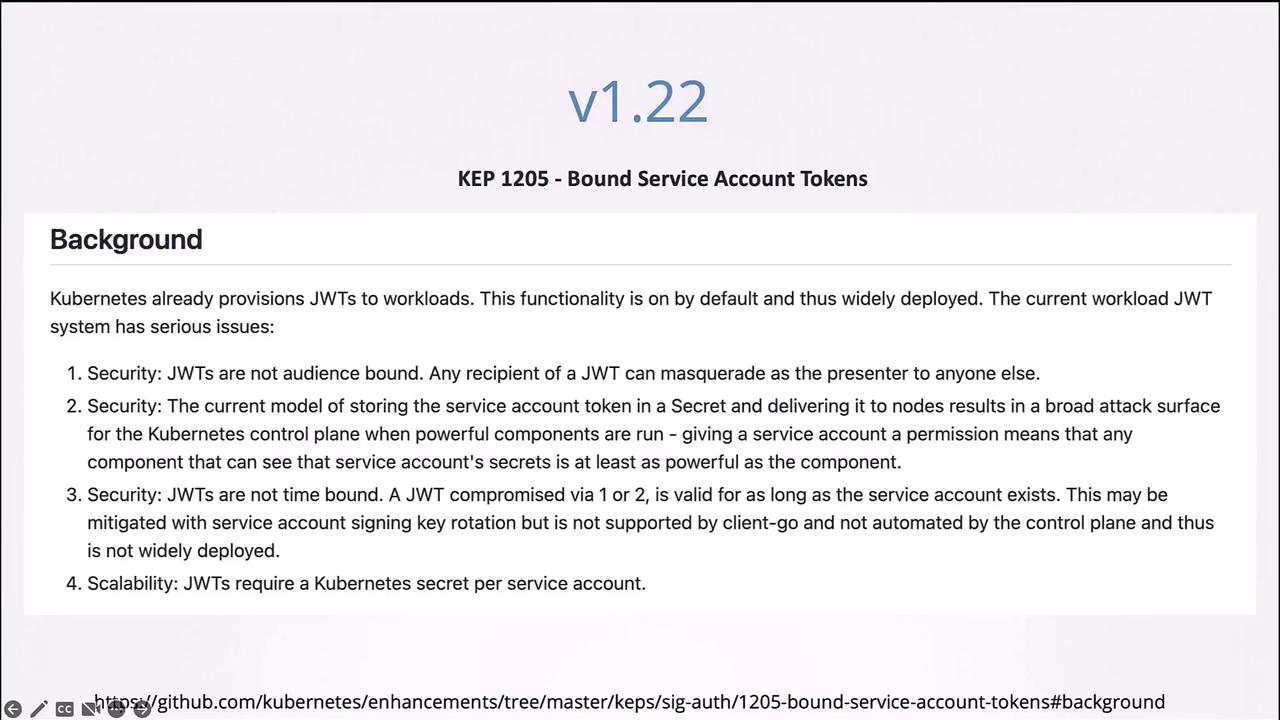
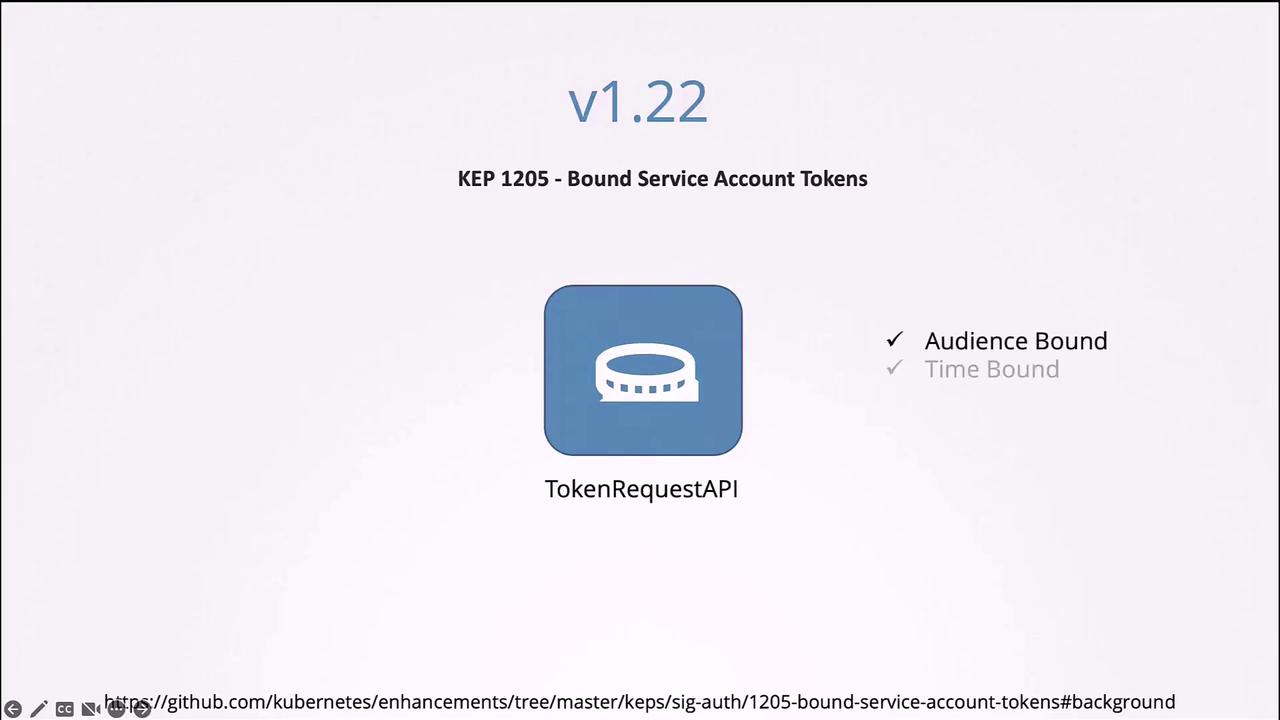
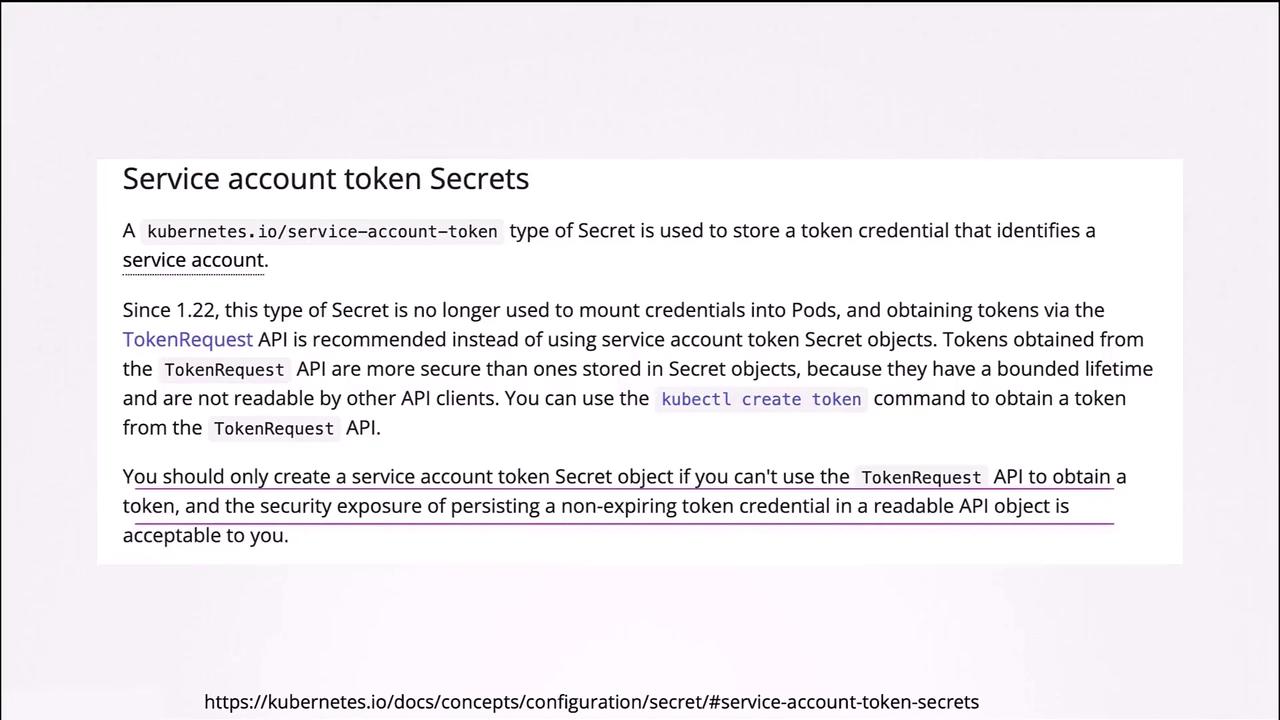
Summary
- Service Accounts vs. User Accounts: Service accounts are meant for applications (or machines), whereas user accounts are for human users.
- Token Generation: Creating a service account automatically generates a token stored in a Secret, which is used for API authentication.
- Automatic Token Mounting: Pods can automatically mount the service account token at
/var/run/secrets/kubernetes.io/serviceaccount, though this behavior can be modified. - Enhanced Security: Since Kubernetes v1.22, tokens are generated using the TokenRequest API, making them audience-bound, time-bound, and more secure.
- Kubernetes v1.24 Changes: With v1.24, Kubernetes no longer provisions non-expiring tokens automatically via Secrets; use the
kubectl create tokencommand to generate tokens as needed.
For additional insights, refer to the Kubernetes enhancement proposals and the official documentation on service accounts and tokens.
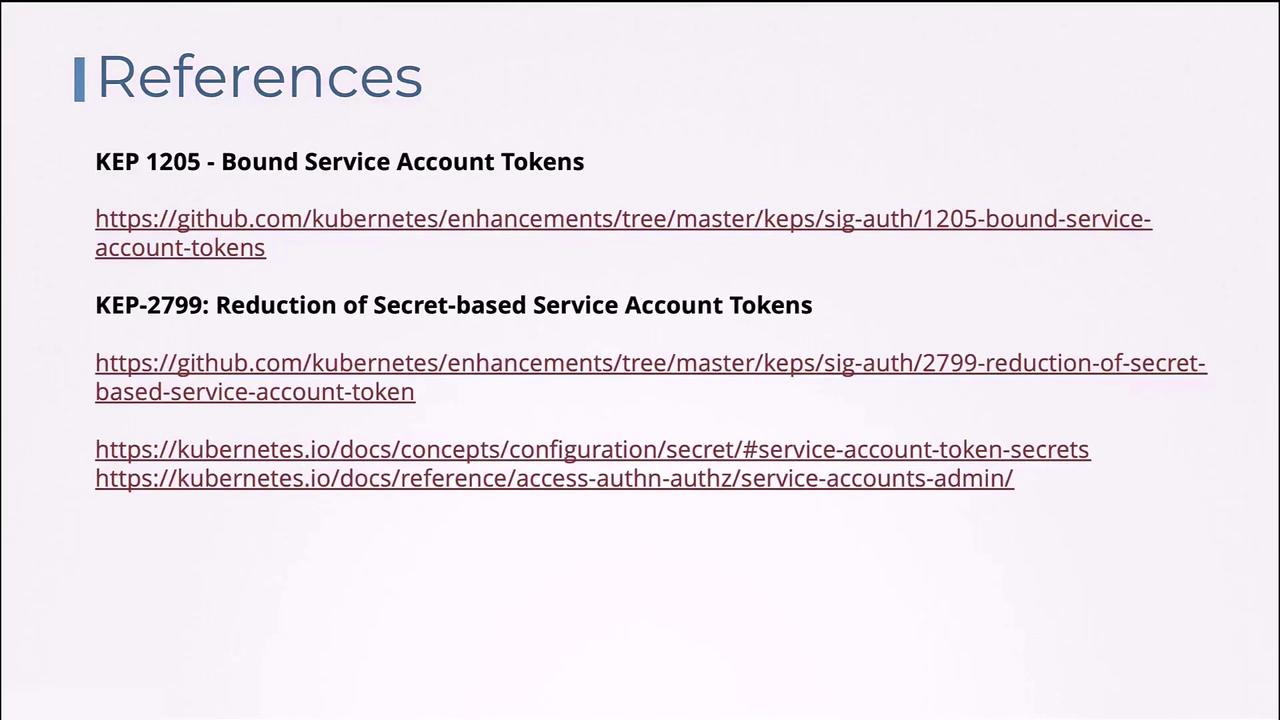
Watch Video
Watch video content
Practice Lab
Practice lab